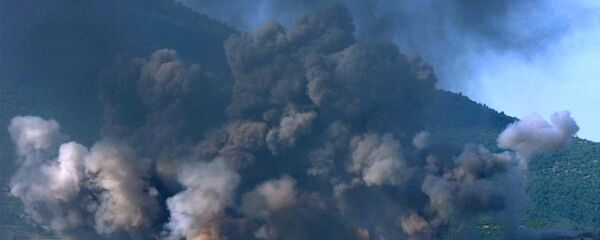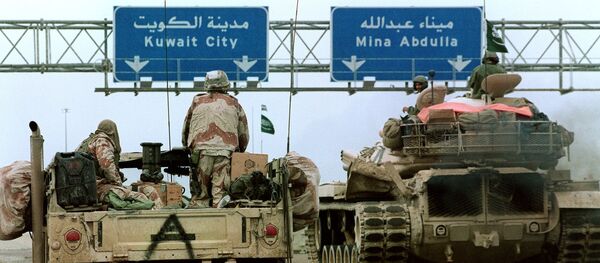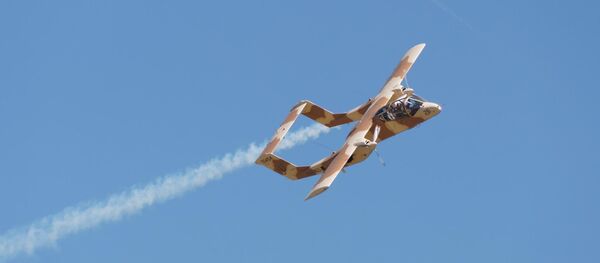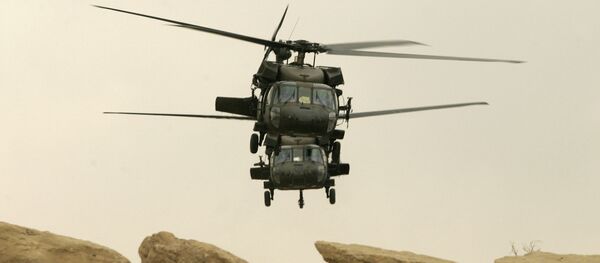"The military operation in Syria, of course, required certain spending, but the main part was from the Defense Ministry's resources – around 33 billion rubles. [This sum] was included in the Ministry's 2015 budget for holding drills and military training. We just redirected these resources for supporting the group in Syria," Putin said, speaking at a ceremony summarizing the results of Russia's five-month-long anti-terror campaign.
With this price tag in mind, Russian news agency RIA Novosti decided to take a look back at some of the most costly military operations since WWII.
#5: The NATO Bombing Campaign in Yugoslavia: $43 Billion
"The war in Kosovo," RIA Novosti recalls, "ended with the 78-day NATO operation, code-named Operation Allied Force, which saw attacks by Allied aircraft against military targets and civilian infrastructure in the Federal Republic of Yugoslavia (FRY). According to estimates by journalists from the BBC and military experts from the British military publishing company Janes, the bombing campaign cost NATO about $43 billion."
"In the course of the operation, Allied aircraft dropped more than 23,000 bombs, destroying about half of the FRY's economic production capacity," the article highlights. Serbia estimates that it sustained about $29.6 billion in losses. According to Yugoslav authorities, the NATO air campaign resulted in the deaths of over 1,700 civilians, and about 10,000 serious injuries.
The campaign ultimately resulted in Kosovo breaking away from Serbia, and declaring independence in 2008; many countries, including Serbia, Russia, China, India and Brazil, refuse to recognize the legitimacy of the move.
#4: Gulf War: Operation Desert Storm: $102 Billion
Desert Storm, the news agency recalled, "became the first illustration of the methods of a new generation of high-tech warfare," featuring an air campaign with the heavy use of 'smart' precision-guided weaponry, as well as electronic warfare, complemented by round-the-clock news coverage by news agencies like CNN. "According to the Congressional Research Service, the operation cost the United States $102 billion, and the lives of 298 servicemen."
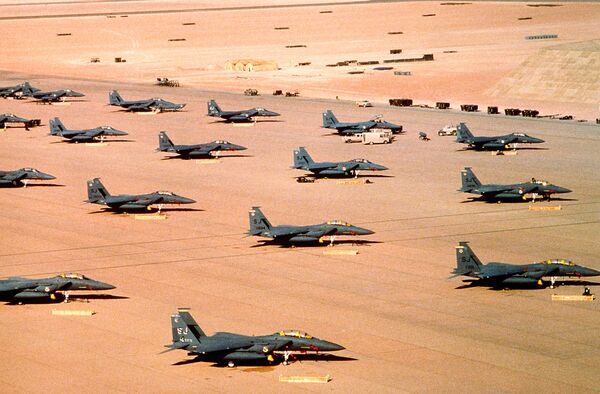
As for Iraq, the Gulf War cost the country 20,000-30,000 military dead, and over 75,000 wounded. At the same time, the depleted uranium rounds used during that campaign were estimated to have dramatically increased cancer rates among Iraqi military personnel and civilians, with government statistics showing cancer rates rising from 40 per 100,000 people before the Gulf War in 1991, to 800 per 100,000 in 1995, to over 1,600 per 100,000 in 2005.
#3: Korean War: $341 Billion
"UN forces, consisting mainly of American troops, and under the command of General Douglas MacArthur, were sent to the peninsula. China's intervention in the war allowed North Korea to regain lost positions, and the war would drag on for three years. Factually, it ended with the signing of a ceasefire agreement in 1953, but a peace agreement between North and South Korea has yet to be signed."
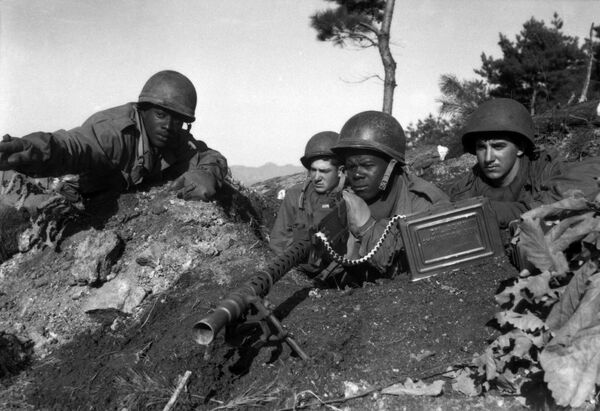
"One of the largest battles of the war," RIA Novosti recalled, "was the Battle of Taegu, during which the Allied Air Force carried out the most ambitious operation since the Normandy landings. Hundreds of B-29 bombers dropped over 3,000 five hundred and thousand pound bombs."
In the course of the war, Allied carpet bombing is estimated to have destroyed upwards of three quarters of North Korea's population centers; in all, the US dropped 635,000 tons of bombs, including 32,000 tons of napalm, on the peninsula, which is more than the total dropped during the entirety of the US's Pacific campaign in WWII.
"The Korean War cost the United States $341 billion [in 2011 dollars], and nearly 34,000 battle deaths [along with 2,830 non-combat deaths]." The war, which also cost millions of Korean military and civilian deaths, ended in a stalemate in 1953.
#2: Vietnam War: $738 Billion
"In 1965, North Vietnamese guerrillas attacked a US military base at Pleiku, central Vietnam, and the United States launched Operation Rolling Thunder, which would become the longest US Air Force bombing campaign since the Second World War. Air strikes on North Vietnam cost Washington about $900 million," while on the whole "the Vietnam War, which lasted eight years, would cost the US $738 billion [in 2011 dollars] and more than 58,000 US military personnel."
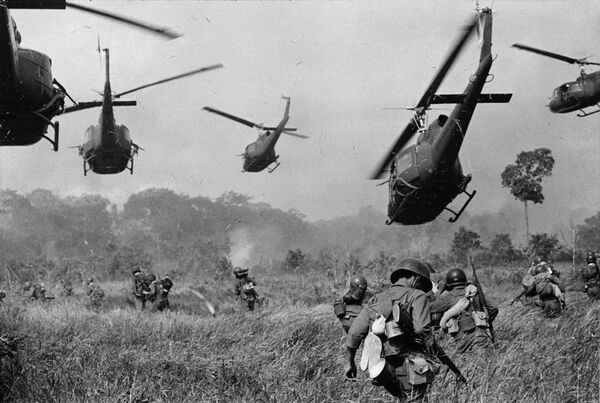
"Vietnam," RIA Novosti notes, "is arguably the most written-about war in US literature; over 500 films and series have been created devoted to the war, recreating the mythology of a campaign which has left an indelible mark on the mind of American society. One of the consequences of Washington's participation in the war was the 'Vietnam syndrome', manifested in the refusal of many Americans to support risky and long-term military campaigns."
The Vietnam War resulted in the withdrawal of US forces in 1973, and Vietnam's unification in 1975 following a North Vietnamese invasion and the capture of Saigon.
#1 The US 'War on Terror' (Iraq, Afghanistan): Between $1-6 Trillion
"After the September 11, 2001 terror attacks, US President George W. Bush launched Operation Enduring Freedom," a series of campaigns ostensibly aimed at combating global terrorism in countries around the world, from Afghanistan and Iraq, to the Philippines, Somalia, Pakistan, Yemen, and Indonesia.
The Congressional Research Service has estimated that the total cost of the war between 2001 and 2010 alone as having amounted to $1.147 trillion (adjusted for inflation). However, according to a 2013 estimate by Professor Linda Bilmes of the John F. Kennedy School of Government, if the costs of long-term medical care and disability compensation, military replenishment and social and economic costs are taken into account, the total cost of the war will amount to between $4 and $6 trillion dollars once all is said and done.
"This," RIA Novosti noted, "makes the War on Terror the most expensive conflict in American history. In World War II, previously considered the most expensive campaign in US history, America spent an estimated $3 trillion [accounting for inflation]."
In addition to its monetary costs, the War on Terror has cost the US-led Coalition thousands of soldiers' lives, with tens of thousands more injured. Neither the War in Iraq nor the NATO War in Afghanistan can be said to have been even a qualified success. Following over a decade of sectarian violence, large swathes of western Iraq are now occupied by Daesh Islamist militants. Afghanistan, meanwhile, has seen the Taliban regain control over large areas of the country as the NATO mission winds down.


